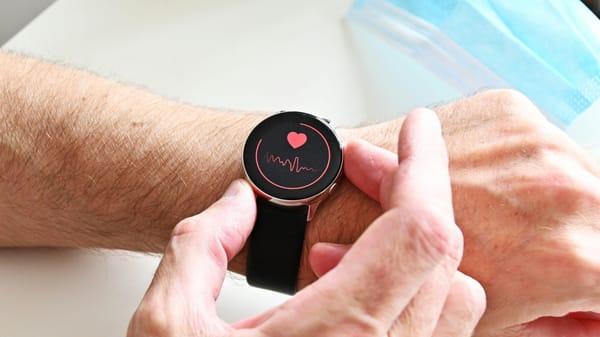Diabetes Cure Code Unlocked with Personalized Stem Cells
A groundbreaking study has emerged that could revolutionize the treatment of type 2 diabetes (T2D). This demonstrates the successful application of personalized stem cell therapy in treating a long-standing T2D patient.

Imagine a future where diabetes is no longer a lifelong sentence, but a manageable condition that can be reversed with a revolutionary new therapy. What if the key to unlocking this future lies in a groundbreaking stem cell treatment that's already showing remarkable results in clinical trials?
In times of medical advancements, a groundbreaking study has emerged that could revolutionize the treatment of type 2 diabetes (T2D). This innovative research, spearheaded by Wu et al., demonstrates the successful application of personalized stem cell therapy in treating a long-standing T2D patient, potentially paving the way for a paradigm shift in diabetes management.
T2D has long been a global health concern, affecting millions and placing significant strain on healthcare systems worldwide. The disease typically progresses from insulin resistance to a gradual decline in pancreatic islet function, often resulting in more than 30% of patients becoming dependent on exogenous insulin treatment. While cadaveric islet transplantation has shown promise, its widespread application has been severely limited by the scarcity of donor organs.
In the game-changing approach of endoderm stem cell-derived (EnSC) islet tissues, researchers successfully treated a 59-year-old male patient with a 25-year history of T2D, poor glycemic control, and a prior kidney transplantation. The innovative procedure involved generating personalized E-islets from the patient's own stem cells, effectively creating a tailor-made solution to restore pancreatic function.
The results of this pilot trial are nothing short of remarkable. Within a mere two weeks post-transplantation, the patient exhibited significant improvements in glycemic control. As the study progressed, the need for exogenous insulin diminished, eventually leading to its complete withdrawal. Perhaps most impressively, the patient maintained excellent blood glucose levels throughout the 116-week follow-up period, with no adverse events such as tumor formation.
This breakthrough not only offers hope for millions of T2D patients but also opens up new possibilities for treating other forms of diabetes. This could be a new era in diabetes management, but one question arises: Could this personalized stem cell therapy be the key to unlocking a future where diabetes is no longer a lifelong sentence?
As the medical community eagerly awaits further research and clinical trials to validate and extend these findings, one thing is clear: the landscape of diabetes treatment is on the verge of a transformative change. This study marks a significant step forward to improve the lives of those affected by this chronic condition, potentially offering a path to a diabetes-free future.
Personalized Stem Cell Therapy as a Game Changer in Diabetes Treatment
Stem cell therapy has emerged as a promising frontier in the treatment of type 2 diabetes (T2D), offering hope where traditional methods have fallen short. At the forefront of this innovative approach are pancreatic progenitor cells, which have demonstrated remarkable potential in reversing diabetes in animal models. These cells, capable of differentiating into insulin-producing β-cells, have shown the ability to restore glucose homeostasis in diabetic mice and primates, paving the way for human applications.
Recent advancements in the field have focused on human pluripotent stem cells (hPSCs) as a source for generating pancreatic progenitors. These cells have the unique ability to differentiate into various cell types, including those of the pancreatic lineage. However, the clinical application of hPSC-derived cells has faced challenges, including complex differentiation processes and the risk of teratoma formation from residual undifferentiated cells.
In a groundbreaking study, Wu et al. have taken a significant step forward by utilizing endoderm stem cell-derived (EnSC) islet tissues. This approach addresses many of the limitations associated with hPSCs while maintaining the potential for large-scale islet cell generation. The researchers conducted a pilot trial focusing on personalized islet transplantation, marking a pivotal moment in diabetes treatment.
The study centered on a 59-year-old male patient with a 25-year history of T2D, presenting a complex case of poor glycemic control and a prior kidney transplantation. This patient profile is particularly noteworthy, as it represents a demographic often challenging to treat with conventional methods. The patient's long-standing diabetes and compromised kidney function made him an ideal candidate for exploring the potential of stem cell therapy.
Wu et al.'s approach involved generating personalized E-islets from the patient's own stem cells, a process that not only mitigates the risk of immune rejection but also addresses the ethical concerns associated with embryonic stem cells. The EnSCs were cultured under modified conditions to produce pancreatic progenitor cells, which were then differentiated into functional islet tissues.
The transplantation procedure involved delivering 1.2 million islet equivalents (IEQs) of E-islets through percutaneous transhepatic portal vein transplantation. This method, conforming to regulatory guidance from clinical islet transplantation registration, ensures optimal delivery and engraftment of the islet tissues.
What sets this study apart is not just the innovative use of EnSCs, but also the comprehensive follow-up period of 116 weeks. Throughout this time, the patient underwent rigorous monitoring, including mixed-meal tolerance tests, continuous glucose monitoring, and regular assessments of endocrine function. The results were nothing short of remarkable, with significant improvements in glycemic control observed as early as two weeks post-transplantation.
This breakthrough study not only demonstrates the feasibility of personalized stem cell therapy for T2D but also opens new avenues for treating various forms of diabetes. By successfully addressing the limitations of previous stem cell approaches and showing long-term efficacy and safety, Wu et al. have taken a giant leap towards making stem cell therapy a viable and potentially transformative treatment option for millions of diabetes patients worldwide.
From Stem Cells to Solutions: Transforming Diabetes Management with Personalized Islet Transplantation
WThe groundbreaking study by Wu et al. introduces a novel approach to diabetes treatment through personalized endoderm stem cell-derived (EnSC) islet tissue transplantation. The process begins with the generation of autologous E-islets from the patient's own stem cells, a significant advancement that mitigates the risk of immune rejection and addresses ethical concerns associated with embryonic stem cells.
The researchers established EnSCs under modified culture conditions, progressing through two intermediate stages under GMP conditions to produce the final E-islets.
These E-islets demonstrated morphology, endocrine cell composition, gene expression patterns, and in vitro functionality comparable to human cadaveric islets. Importantly, the E-islets showed functional efficacy in both mouse and monkey models of diabetes, providing a strong foundation for human application.
The transplantation procedure involved delivering 1.2 million islet equivalents (IEQs) of E-islets through percutaneous transhepatic portal vein transplantation. This method, conforming to regulatory guidance from clinical islet transplantation registration, ensures optimal delivery and engraftment of the islet tissues. The use of the patient's own cells and the intrahepatic implantation represent significant advancements in islet transplantation technology.
Safety was a paramount concern throughout the study. Rigorous protocols were implemented to avoid tumorigenesis and ensure functionality. Neither tumor formation nor cystic/ductal structures indicating cell proliferation were detected in immunocompromised animals transplanted with either EnSCs or E-islets during preclinical experiments.
The clinical results of this innovative procedure were nothing short of remarkable. The patient, a 59-year-old male with a 25-year history of T2D and poor glycemic control, showed significant improvements in glycemic control as early as two weeks post-transplantation. The mean amplitude of glycemic excursion (MAGE) declined from 5.50 mmol/L to 3.60 mmol/L, while the time-in-the-tight-target-range (TITR) increased rapidly from 56.7% to 77.8%.
Perhaps most impressively, the patient's insulin requirements were gradually reduced until complete withdrawal at the end of week 11. By week 32, the patient's TITR had reached an astounding 99% and was maintained thereafter. The hemoglobin A1c levels decreased from 6.6% at baseline to 4.6% at week 113, indicating excellent long-term glycemic control.
Throughout the 116-week follow-up period, no tumor formation was detected, and the patient experienced only minor, temporary adverse events. The absence of severe hypoglycemia or hyperglycemia episodes during this extended period further underscores the safety and efficacy of this treatment.
This pioneering study not only demonstrates the feasibility of personalized stem cell therapy for T2D but also opens new avenues for treating various forms of diabetes. By successfully addressing the limitations of previous stem cell approaches and showing long-term efficacy and safety, Wu et al. have taken a giant leap towards making stem cell therapy a viable and potentially transformative treatment option for millions of diabetes patients worldwide.
Revolutionizing Diabetes Care: The Far-Reaching Impact and Future Horizons
The groundbreaking study by Wu et al. has opened a new chapter in diabetes treatment, with implications that extend far beyond the realm of type 2 diabetes (T2D). Imagine a world where diabetes is no longer a lifelong sentence, but a manageable condition with the potential for a cure. This is the tantalizing future that stem cell-derived islet transplantation promises.
For the millions living with T2D, this research offers hope. The success of personalized endoderm stem cell-derived (EnSC) islet tissue transplantation could potentially free patients from the burden of daily insulin injections and strict dietary regimens. But the impact doesn't stop there. This breakthrough has the potential to revolutionize treatment for other forms of diabetes as well, including type 1 diabetes (T1D) and gestational diabetes.
Looking ahead, researchers are eager to expand this therapy to a broader patient base. Future studies will likely focus on fine-tuning the procedure, optimizing dosages, and exploring its efficacy in different diabetes subtypes. One particularly exciting avenue is the potential application in T1D patients, where the autoimmune destruction of beta cells poses an additional challenge.
Perhaps one of the most intriguing prospects on the horizon is the development of "universal islets." Imagine off-the-shelf islet tissues that could be transplanted into any patient, regardless of their genetic makeup, without the need for immunosuppression. This could dramatically simplify the treatment process, making it more accessible and cost-effective for patients worldwide.
However, as with any groundbreaking medical advancement, caution and thorough investigation are paramount. While the results of this pilot study are incredibly promising, they represent just the first step on a long journey. Larger clinical trials are needed to validate these findings and explore potential long-term effects or unforeseen complications.
The successful treatment of a T2D patient using personalized stem cell-derived islet transplantation marks a significant milestone in diabetes research. It's not just a breakthrough; it's a paradigm shift in how we approach diabetes treatment. This study has opened the door to a future where diabetes management could be radically different – and significantly improved – for millions of people worldwide.
The medical community must rise to the challenge. Further research, rigorous clinical trials, and collaborative efforts across disciplines will be crucial in translating this promising therapy from a single success story to a widely available treatment option. The journey ahead is long, but the potential reward – a world where diabetes no longer dictates lives – is immeasurable.
A Second Chance at Life: John's Diabetes Journey
John had lived with type 2 diabetes for 25 years, watching it slowly chip away at his health. Daily insulin injections, strict diets, and constant blood sugar monitoring had become his norm. When kidney failure struck, requiring a transplant, John thought he'd reached his limit.
Post-transplant, his diabetes worsened, threatening his new kidney. Frustrated and scared, John felt trapped in an endless cycle of managing his condition.
Then, his doctor mentioned a groundbreaking clinical trial using stem cell therapy. Initially skeptical, John decided to take the chance. The procedure used his own cells to create insulin-producing islets, which were then transplanted into his body.
Within weeks, John noticed dramatic changes. His blood sugar stabilized, and gradually, he needed less insulin. By the third month, he was insulin-free for the first time in decades.
Now, two years later, John marvels at his transformation. He no longer fears diabetes complications or worries about his transplanted kidney. This innovative treatment didn't just manage his symptoms – it gave him his life back, free from the constant burden of diabetes.
Key Takeaways
- Stem cell-derived islet transplantation offers a promising alternative to traditional diabetes treatments, potentially freeing patients from daily insulin injections and strict dietary regimens.
- The study successfully treated a 59-year-old male patient with a 25-year history of T2D using personalized E-islets generated from his own stem cells.
- Significant improvements in glycemic control were observed as early as two weeks post-transplantation, with the patient's time-in-the-tight-target-range (TITR) increasing from 56.7% to 77.8%.
- The patient was able to completely withdraw from insulin treatment by the end of week 11, demonstrating the therapy's potential to restore natural insulin production.
- Long-term efficacy was observed, with the patient maintaining excellent blood glucose levels throughout the 116-week follow-up period.
- No tumor formation or severe graft-related adverse events were reported during the follow-up period, indicating the safety of the procedure.
- The use of endoderm stem cells (EnSCs) for islet regeneration offers advantages over other stem cell types, as EnSCs are non-tumorigenic and more efficient for mass production of islets.
- This breakthrough has potential applications beyond T2D, possibly extending to other forms of diabetes, including type 1 diabetes.
- The study opens up possibilities for developing "universal islets" as off-the-shelf products for diabetes treatment without the need for immunosuppression.
- While promising, further research and larger clinical trials are needed to validate these findings and explore the therapy's efficacy in different diabetes subtypes.
Your Top Questions Answered
What is this new diabetes treatment?
This treatment involves transplanting personalized islet tissues (E-islets) derived from the patient's own endoderm stem cells (EnSCs) to restore insulin production and improve blood sugar control in type 2 diabetes patients.
How does it differ from traditional diabetes treatments?
Unlike daily insulin injections or oral medications, this therapy aims to restore the body's natural ability to produce insulin by transplanting functional islet cells, potentially freeing patients from daily diabetes management routines.
Who was the first patient to receive this treatment?
The first patient was a 59-year-old man with a 25-year history of type 2 diabetes, who had previously undergone kidney transplantation and was experiencing poor glycemic control.
What were the results of the treatment?
The patient showed significant improvements in glycemic control within two weeks of transplantation. By week 11, he no longer required insulin injections, and his blood glucose levels remained stable throughout the 116-week follow-up period.
Is this treatment safe?
The study reported no tumor formation or severe graft-related adverse events during the 116-week follow-up period, indicating a good safety profile. However, larger clinical trials are needed to confirm long-term safety.
Can this treatment cure all types of diabetes?
While the study focused on a type 2 diabetes patient, researchers believe this approach has potential applications for other forms of diabetes, including type 1. However, more research is needed to confirm its efficacy in different diabetes subtypes.
Will this treatment be widely available soon?
This was a pilot study, and further research and larger clinical trials are needed before the treatment can become widely available. It may take several years before it's approved for general use.
What are the advantages of using endoderm stem cells (EnSCs)?
EnSCs are non-tumorigenic and more efficient for mass production of islets. They are also endoderm-specific and developmentally closer to pancreatic lineages, making them potentially safer and more effective than other stem cell types.
Could this lead to a "universal" diabetes treatment?
Researchers are exploring the possibility of developing "universal islets" as off-the-shelf products for diabetes treatment without the need for immunosuppression. However, this concept is still in the early stages of research.
What are the next steps for this research?
Future studies will focus on increasing the sample size, testing the therapy in different diabetes subtypes (including type 1), and exploring the pharmacodynamics of stem cell-derived islets as a drug. The goal is to validate these findings and extend the therapy to a broader population.
References
https://pmc.ncbi.nlm.nih.gov/articles/PMC11210168/
https://pubmed.ncbi.nlm.nih.gov/10911004/
https://pubmed.ncbi.nlm.nih.gov/25303535/
https://www.nature.com/articles/s41586-019-1168-5
https://pubmed.ncbi.nlm.nih.gov/27163171/
https://pubmed.ncbi.nlm.nih.gov/18288110/
https://pubmed.ncbi.nlm.nih.gov/29859172/
https://www.sciencedirect.com/science/article/pii/S2213671118305319
https://pubmed.ncbi.nlm.nih.gov/30710150/
https://www.nature.com/articles/ncomms10080
https://pubmed.ncbi.nlm.nih.gov/27076077/
This article was written by Ariadna Paniagua, an experienced writer and editor for several institutions, papers, and websites.




